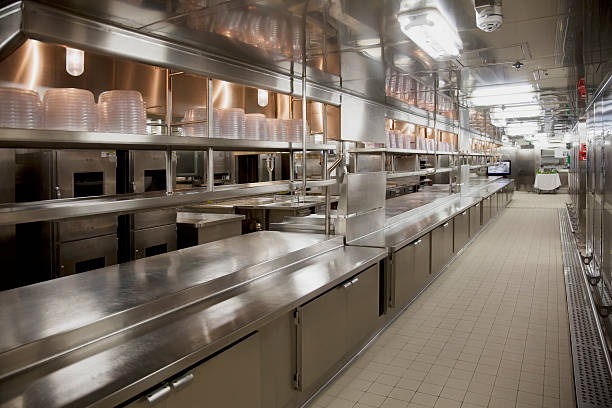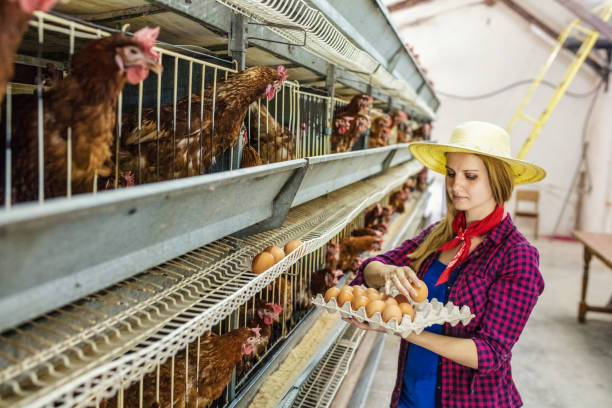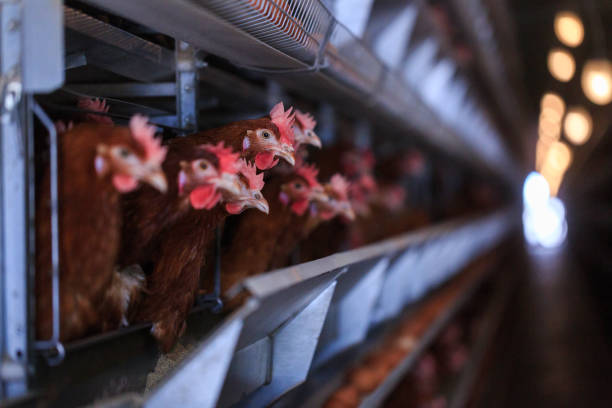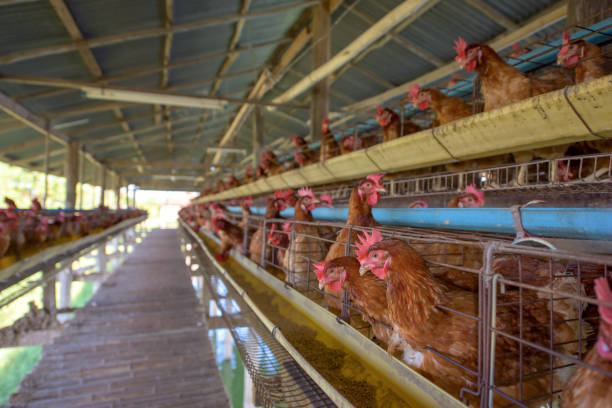
70,000 Broiler Capacity: Exploring Different Chicken Cage System Options
70,000 Broiler Capacity: Exploring Different Chicken Cage System Options
Planning for a broiler farm with a 70,000-chicken capacity? It’s an exciting venture! But before you jump in, choosing the right chicken cage system is crucial for maximizing efficiency, bird health, and ultimately, profitability. Different systems offer unique benefits, so let’s break down some common options to help you find the perfect fit for your needs.
Why Choose a Chicken Cage System?
While free-range farming is gaining popularity, cage systems remain a practical and efficient choice, especially for large-scale operations like a 70,000-bird farm. Here’s why:
Improved Space Utilization: Cages allow you to house more birds in a smaller area compared to floor systems. This is a significant advantage when land is limited or expensive.
Enhanced Disease Control: Separating birds into cages reduces the spread of diseases and parasites. This means healthier flocks and lower veterinary costs.
Better Manure Management: Cage systems often come with automated manure removal systems, simplifying the cleaning process and improving overall hygiene.
Easier Monitoring: Cages make it easier to monitor individual birds for health issues or behavioral changes. This allows for early intervention and prevents problems from escalating.
Reduced Labor Costs: Automation in feeding, watering, and manure removal significantly reduces the labor required to manage the farm.
Consistent Growth Rates: Controlled environment in cages, including temperature and ventilation, leads to more consistent growth rates and predictable harvesting times.
Exploring Chicken Cage System Options for 70,000 Broilers

Now, let’s get into the specific types of cage systems suitable for housing 70,000 broilers. The ideal choice depends on factors like your budget, available space, climate, and desired level of automation.
A-Frame Broiler Cages
Structure and Design: A-frame cages are among the most common and economical options. They are arranged in rows with a sloped, A-shaped frame. Each cage typically houses a group of broilers. The entire structure is designed for efficient space use and ease of management.
Key Features:
Simple Design: A-frame cages have a straightforward design, making them easy to install and maintain.
Cost-Effective: They are often the most affordable option, making them ideal for farmers with budget constraints.
Manual or Semi-Automatic Systems: A-frame cages can be adapted for manual feeding and watering or integrated with semi-automatic systems for increased efficiency.
Good Ventilation: The A-shape allows for decent air circulation, which is crucial for maintaining a healthy environment for the broilers.
Considerations for 70,000 Broilers:
Space Requirements: Given their density, you’ll need to carefully calculate the required building space to accommodate the cages and ensure proper ventilation and access.
Labor Needs: While semi-automatic options exist, A-frame systems generally require more manual labor than fully automated systems.
Manure Management: Plan for effective manure removal, either manually or with a semi-automated system, to maintain hygiene.
H-Frame Broiler Cages
Structure and Design: H-frame cages are characterized by their vertical, multi-tiered structure, creating an H-shape when viewed from the side. This design maximizes the use of vertical space, making it an excellent option for facilities with limited floor area.
Key Features:
Optimized Space Utilization: H-frame cages make the most of vertical space, allowing you to house more birds in a smaller footprint.
Automated Feeding and Watering: These systems often integrate with automated feeding and watering lines, reducing labor costs and ensuring consistent nutrition.
Manure Removal Systems: H-frame cages typically include automated manure removal, improving hygiene and reducing the risk of disease.
Enhanced Monitoring: The design allows for easier observation and monitoring of the broilers.
Considerations for 70,000 Broilers:
Higher Initial Investment: H-frame systems generally require a higher initial investment compared to A-frame cages.
Maintenance: The complexity of automated systems may require more specialized maintenance.
Ventilation: Ensuring adequate ventilation throughout all tiers of the cage is crucial for maintaining a healthy environment.
Layer Broiler Integrated Systems
Structure and Design: Layer Broiler Integrated Systems combine the benefits of both layer and broiler setups. In this system, broilers are kept in cages, and the system is designed for the entire rearing process from day-old chicks to market weight.
Key Features:
Complete Automation: These systems offer full automation of feeding, watering, ventilation, temperature control, and manure removal.
Precise Environmental Control: Integrated systems allow for precise control over the environment, optimizing growth rates and minimizing stress.
Reduced Labor Costs: Full automation significantly reduces the need for manual labor.
Biosecurity: These systems offer enhanced biosecurity features, reducing the risk of disease outbreaks.
Considerations for 70,000 Broilers:
Highest Initial Investment: This is the most expensive option, but the long-term benefits often outweigh the initial costs.
Technical Expertise: Operating and maintaining a fully automated system requires technical expertise.
Energy Consumption: Automation can lead to higher energy consumption, so it’s essential to consider energy efficiency.
Open House Broiler Systems
Structure and Design: A well constructed, enclosed house will shield broilers from the elements, predators, and diseases. A large building that offers a comfortable, safe environment for optimal growth.
Key Features:
Natural Behavior: Broilers can exhibit more natural behaviors such as scratching and dust bathing, potentially improving their welfare.
Lower Initial Cost: Generally, open house systems have a lower initial cost compared to cage systems, as they require less specialized equipment.
Flexibility: The open space allows farmers to adjust stocking densities and management practices more easily.
Natural Ventilation: Many open house systems rely on natural ventilation, reducing energy costs.

Considerations for 70,000 Broilers:
Higher Risk of Disease: The higher density of birds and exposure to the environment can increase the risk of disease outbreaks.
More Labor Intensive: Managing the litter, feeding, and watering can be more labor-intensive compared to cage systems.
Environmental Control: Maintaining consistent temperature and humidity can be challenging, especially in regions with extreme climates.
Predator Control: Effective predator control measures are essential to protect the broilers.
Floor Raising Systems
Structure and Design: Broilers are raised on the floor of the poultry house, typically on a bed of litter material such as wood shavings, straw, or rice hulls. The birds have freedom to move around.
Key Features:
Enhanced Welfare: Broilers have more freedom of movement and can exhibit natural behaviors, potentially improving their welfare.
Lower Initial Cost: Reduced equipment investment makes it a cheaper undertaking.
Flexibility: Stocking levels can be optimized to the specific floor plan.
Considerations for 70,000 Broilers:
Higher Risk of Disease: Contact with litter can increase the risk of disease transmission; maintaining litter quality is vital.
More Labor Intensive: Litter- Floor raising systems tend to be labor intensive when feeding and cleaning,
Predator Control: Need strong barrier protection from natural hunters

Factors to Consider When Choosing a System
Before making a final decision, carefully consider these factors:
Budget: How much are you willing to invest in the initial setup? Consider both the upfront costs and the long-term operating expenses.
Space Availability: How much land do you have available for the farm? Choose a system that maximizes space utilization.
Climate: What is the climate in your region? Ensure the system can provide adequate temperature control and ventilation.
Labor Availability: How much labor do you have available for the farm? Choose a system that minimizes labor costs.
Automation Level: How much automation do you want in your system? Consider the benefits of automation versus the upfront costs and maintenance requirements.
Biosecurity: How important is biosecurity to you? Choose a system that offers enhanced biosecurity features.
Regulations: Are there any local or national regulations that you need to comply with? Ensure the system meets all regulatory requirements.
Animal Welfare: How important is animal welfare to you? Choose a system that provides a comfortable and healthy environment for the birds.
Making the Right Choice
Choosing the right chicken cage system for a 70,000-broiler operation is a significant decision. By carefully evaluating your needs and considering the pros and cons of each system, you can make an informed choice that will lead to a successful and profitable poultry farming operation. Don’t hesitate to consult with poultry equipment suppliers and experienced farmers to get their insights and recommendations. Good luck!
